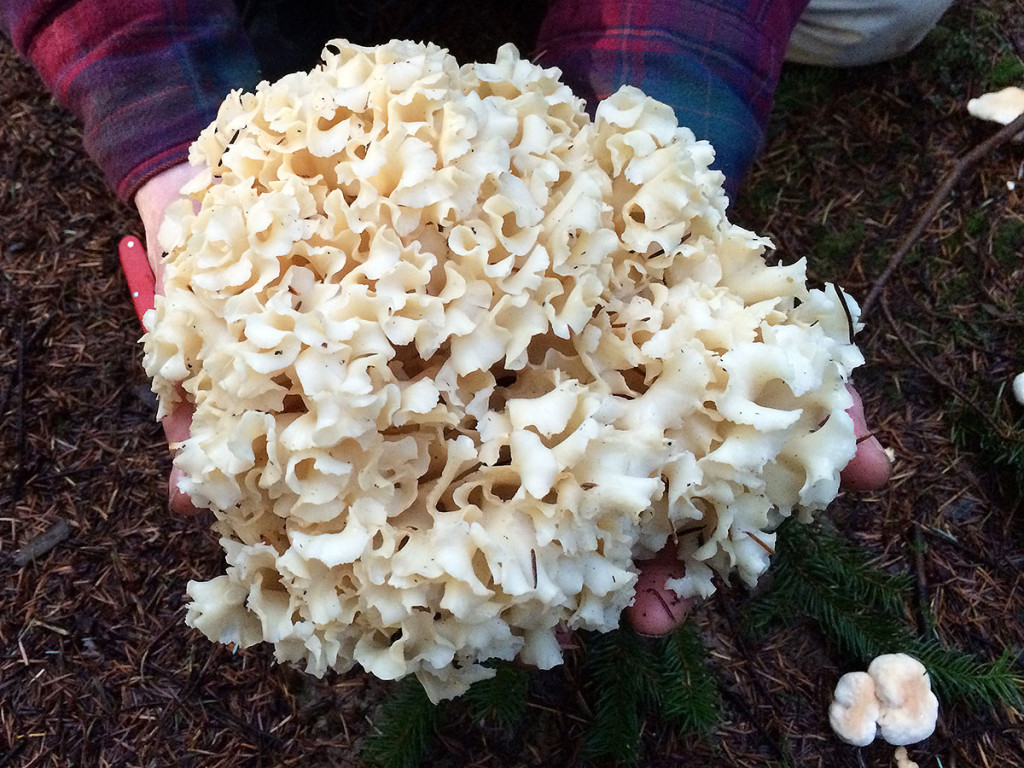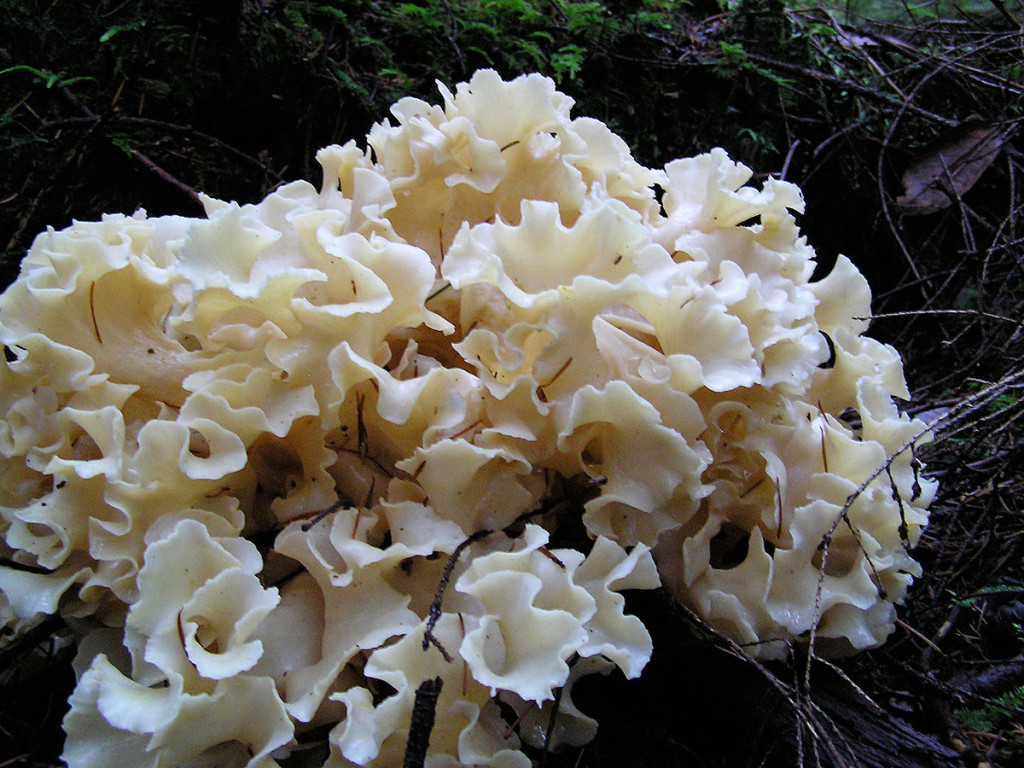This large cauliflower was found in Sprockids Bike Park, Sunshine Coast, BC, Canada.
Balfour again makes a big find after a session of gathering chanterelles in Sprockids. This lovely cauliflower was growing on top of a stump alongside one of the trails. McDowell sectioned it off, cleaned all the forest needles and dirt from it and had friends over for tastings.


About the Cauliflower Mushroom (Sparassis radicata)
Sparassis (also known as cauliflower mushroom) is a genus of parasitic and saprobic mushrooms characterised by their unique shape and appearance. This appearance can be described as similar to a sea sponge, a brain, or a head of cauliflower, from which it has been given its popular name.
They are increasingly cultivated and being sold in Korea, Japan, USA and Australia.
The generic name comes from the Greek sparassein meaning to tear.
The best-known and most widely collected species of Sparassis are S. crispa (found in Europe and eastern North America) and S. radicata (found in western North America). These species have a very similar appearance and some authorities treat them as conspecific. Their color can range from light brown-yellow to yellow-grey or a creamy white cauliflower colour. They are normally 10 to 25 cm tall, but can grow to be quite large, with reported cases of fruiting bodies more than half a meter tall and 14 kg in weight. Because of their unique look and size, they are unlikely to be mistaken for any poisonous/inedible mushrooms. They grow as parasites or saprobes on the roots or bases of various species of hardwoods, especially oak, and conifers, and hence are most commonly found growing close to fir, pine, oak or spruce trees.
More information: Sparassis: Wikipedia